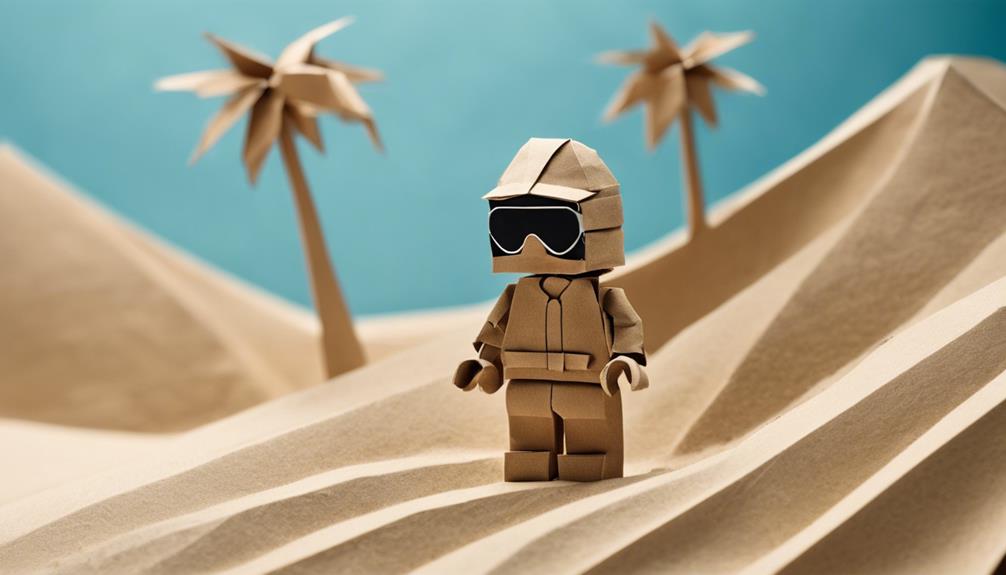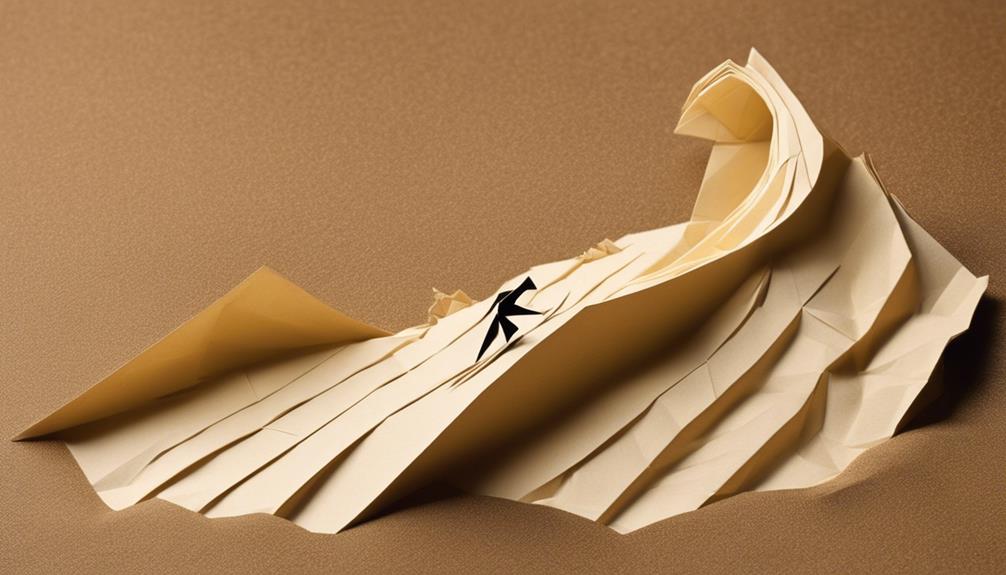General Rules of Sandsurfing Sport
Imagine the warm sun kissing your skin as you glide effortlessly down the golden dunes, feeling the rush of adrenaline with each twist and turn. But before you grab your board and hit the sand, there are essential rules to follow that ensure a safe and enjoyable sandsurfing experience. From equipment requirements to mastering basic techniques, each aspect plays a crucial role in your performance. So, are you ready to elevate your sandsurfing skills and conquer the majestic desert waves?
Equipment Requirements

When gearing up for sandsurfing, ensure you have the essential equipment to enhance your experience and safety on the dunes. Proper board maintenance is crucial for optimal performance. Check your board regularly for any signs of damage, such as cracks or loose bindings, and make any necessary repairs before hitting the dunes. Keeping your equipment in top condition not only improves your ride but also ensures your safety while sandsurfing.
Effective equipment storage is also key. Store your sandsurfing gear in a cool, dry place away from direct sunlight to prevent damage from heat or moisture. Proper storage helps prolong the lifespan of your equipment, saving you money in the long run. Consider investing in a board bag to protect your board during transportation and storage.
As you progress in your sandsurfing skills, focus on technique refinement. Practice your turns, jumps, and tricks to enhance your performance on the dunes. Experiment with different stances and positions on your board to find what works best for you. Remember, sandsurfing is not just about speed; it's about style and finesse. By continuously working on your technique, you can take your sandsurfing abilities to the next level and truly enjoy the freedom of riding the dunes.
Safety Precautions
Before you hit the sandy slopes, remember that protective gear like helmets and pads are your best friends. It's crucial to hone your skills through training to navigate the dunes safely. Stay sharp by keeping an eye on changing weather conditions that could affect your ride.
Protective Gear Importance
Ensuring your safety while participating in sandsurfing is crucial, and this begins with wearing the necessary protective gear. When hitting the dunes for a thrilling sandsurfing experience, don't overlook the significance of protective gear. Here are four essential items to keep you safe and sound:
- Helmet: Protect your head from potential impacts and falls by wearing a sturdy helmet designed for extreme sports.
- Knee and Elbow Pads: Cushion your joints and prevent injuries with these protective pads, especially during wipeouts.
- Goggles: Shield your eyes from sand particles and harsh sunlight, ensuring clear vision throughout your ride.
- Gloves: Enhance your grip on the sandsurfing board and protect your hands from abrasions and blisters.
Training and Skills
Strap in and prepare to hone your skills for sandsurfing by mastering essential training techniques and safety precautions. When it comes to sandsurfing, balance training and speed control are crucial. Practice standing on the board with your feet hip-width apart, knees slightly bent, and arms out for stability. Engage your core to maintain balance as you glide through the sand. To ensure a smooth ride, focus on technique refinement and endurance building. Work on shifting your weight to steer and carve smoothly on the dunes. Remember, sandsurfing requires both physical and mental strength, so gradually increase your stamina to enjoy longer rides. By mastering these skills, you'll feel confident and liberated as you conquer the sandy slopes.
Weather Conditions Awareness
As you hit the sandy slopes for your sandsurfing adventure, being aware of weather conditions is crucial for your safety. Here are four essential tips to ensure you have a safe and enjoyable experience:
- Wind Speed: Pay attention to the wind speed as strong gusts can affect your control and balance on the board.
- Temperature Changes: Be prepared for sudden temperature shifts by dressing appropriately in layers that can be easily adjusted.
- Weather Forecast: Check the weather forecast before heading out to avoid unexpected storms or extreme weather conditions.
- Seek Shelter: If the weather conditions worsen while you're sandsurfing, seek shelter immediately to protect yourself from any potential dangers.
Stay vigilant and adapt to the weather conditions to make the most of your sandsurfing adventure!
Proper Board Handling
Alright, ready to amp up your sandsurfing skills? Let's talk about the key to mastering this thrilling sport – proper board handling. From nailing the right grip techniques to smoothly maneuvering on those sandy dunes, these points are crucial for a successful ride. Get set to elevate your sandsurfing game with these essential tips!
Board Grip Techniques
Ensuring a firm and secure grip on your sandsurfing board is essential for maintaining control and balance while riding the dunes. Here are some key board grip techniques to enhance your sandsurfing experience:
- Wax Properly: Apply a generous amount of surf wax to your board for improved traction.
- Foot Placement: Place your feet shoulder-width apart for stability and better balance.
- Bend Your Knees: Flex your knees slightly to absorb shocks and maintain control.
- Use Leash: Always attach a leash to your ankle to prevent losing your board in case of a fall.
Maneuvering on Dunes
To navigate the sandy terrain effectively and master the art of sandsurfing, proper board handling on dunes is crucial. When maneuvering on dunes, advanced techniques and speed control are essential for a thrilling experience. Maintain a balanced stance and use your body weight to steer the board smoothly through the shifting sands. For sharper turns, apply pressure on the toes or heels while keeping your eyes on the desired path. When it comes to jumping tips and landing tricks, remember to crouch low before takeoff and extend your legs upon landing to absorb the impact gracefully. Now, let's delve into a table showcasing key aspects of maneuvering on dunes:
| Aspect | Description | Technique | Tip |
|---|---|---|---|
| Board Stance | Balanced position for control | Bend knees slightly | Keep weight centered |
| Turning | Shift weight to steer smoothly | Toes or heels pressure | Look ahead for direction |
| Jumping | Crouch low before taking off | Spring off both feet | Extend legs upon landing for stability |
Choosing the Right Slope

When sandsurfing, finding the right slope can greatly enhance your experience and performance on the dunes. Here are some tips to help you choose the perfect slope for your sandsurfing adventure:
- Slope Selection: Look for slopes that offer a good balance of incline and smoothness. Steeper slopes provide more speed but require advanced techniques to navigate, while gentler slopes are better for beginners as they are easier to handle.
- Mind the Sand Dunes: Consider the size and shape of the sand dunes. Some dunes may be too steep or have uneven surfaces, making them challenging for sandsurfing. Opt for dunes with gradual slopes and uniform sand for a more enjoyable ride.
- Avoid Beginner Mistakes: Beginners often make the mistake of choosing slopes that are too advanced for their skill level. Start with smaller slopes to practice basic techniques before moving on to more challenging terrain.
- Experiment and Adapt: Don't be afraid to try different slopes to find what works best for you. Each slope offers a unique sandsurfing experience, so experiment with different terrains to improve your skills and discover your preferences.
Etiquette on the Dunes
Navigate the sand dunes with grace and respect by adhering to proper etiquette while sandsurfing. Practicing good dune decorum not only ensures your safety but also contributes to a positive experience for all riders. Here are some essential sand etiquette tips to keep in mind:
| Dune Decorum | Group Dynamics |
|---|---|
| Communicate openly | Respect others' space |
| Yield to faster riders | Offer help if needed |
| Leave no trace | Follow the leader |
| Stay on designated trails | Be inclusive |
When sandsurfing, it's crucial to understand the dynamics of group riding. Respect your fellow riders by communicating clearly and being aware of their presence. If you need to pass someone, signal your intentions and wait for a safe opportunity. Remember that everyone has the right to enjoy the dunes peacefully.
Sand etiquette and trail ethics go hand in hand when it comes to sandsurfing. Always stay on designated trails to preserve the natural habitat and prevent erosion. Be mindful of wildlife and other visitors, and leave no trace of your presence. By following these guidelines, you contribute to the sustainability of the sport and ensure that future generations can enjoy the beauty of sandsurfing.
Mastering Basic Techniques

As you delve into the world of sandsurfing, mastering basic techniques is essential for a thrilling and safe ride on the dunes. To conquer the sandy slopes with finesse and confidence, here are some key tips to help you refine your skills:
- Understand Sand Dune Dynamics: Get familiar with how the shape, size, and angle of dunes can affect your ride. Different dunes require different approaches, so learning to read the terrain will give you a significant advantage.
- Focus on Technique Refinement: Practice makes perfect. Work on your stance, foot placement, and body positioning to ensure stability and control while gliding down the dunes. Smooth transitions and fluid movements are key.
- Embrace Balance Training: Balance is crucial in sandsurfing. Strengthen your core muscles and practice balancing exercises to improve your stability on the board. A well-balanced surfer is less likely to take a tumble on the sand.
- Master Speed Control Strategies: Learning how to control your speed is essential for a safe and enjoyable ride. Practice using your body weight, foot pressure, and board positioning to regulate your speed on different terrains. Whether you need to speed up or slow down, mastering these techniques will give you the confidence to navigate the dunes like a pro.
Understanding Wind Conditions
To fully appreciate and excel in the sport of sandsurfing, understanding wind conditions is paramount. Wind direction analysis and speed calculation are crucial elements to grasp before hitting the dunes. Analyzing the wind's direction allows you to choose the best path for your run, ensuring a thrilling ride. Speed calculation is essential for maintaining control and achieving the desired adrenaline rush as you glide effortlessly over the sand.
Weather forecast accuracy is your best friend when planning a sandsurfing session. Keeping an eye on the predicted wind conditions ensures that you make the most out of your time on the dunes. However, it's important to note that even with advanced forecasting technologies, wind variability is a factor to contend with. Be prepared for sudden shifts in wind speed and direction, adapting your technique to the changing conditions on the fly.
Sandboarding Vs. Sandsurfing

Understanding the differences between sandboarding and sandsurfing can greatly enhance your experience on the dunes. So, let's dive into the distinctions:
- Equipment: Sandboarding involves using a board with bindings similar to snowboarding equipment, allowing riders to perform various tricks like 360s and grabs. On the other hand, sandsurfing typically utilizes a board without bindings, akin to a surfboard, enabling fluid movements for freestyle tricks like cutbacks and bottom turns.
- Riding Style: Sandboarding often emphasizes technical skills, with riders executing precise movements on the board to perform intricate tricks during competitions. Sandsurfing, however, leans towards a more fluid and dynamic riding style, focusing on the rider's ability to adapt to the shifting sands during competitions while incorporating freestyle tricks with a surf-like flair.
- Competitions: Sandboarding competitions showcase riders competing in disciplines that highlight their mastery of sandboarding tricks, such as rail slides and aerial maneuvers. Sandsurfing competitions, on the other hand, feature participants demonstrating their prowess in navigating the dunes with speed and style, incorporating freestyle tricks like carves and off-the-lip maneuvers.
- Community: While both sandboarding and sandsurfing have passionate communities, sandboarding enthusiasts often gather to share knowledge on perfecting tricks and techniques. Sandsurfing communities, on the other hand, foster a spirit of camaraderie, with riders supporting each other in honing their skills for competitions and freestyle performances.
Environmental Conservation
Embracing sustainable practices is crucial for preserving the fragile ecosystems that surround sand dunes and ensuring the longevity of the sandsurfing sport. When indulging in the exhilarating experience of sandsurfing, it is essential to be mindful of the environmental impact we leave behind. Waste management plays a vital role in maintaining the pristine beauty of the desert landscapes. Always remember to clean up after yourself and others, leaving no trace of your presence on the dunes. Engaging in beach cleanups not only benefits the environment but also fosters a sense of responsibility and respect for nature among sandsurfing enthusiasts.
Ecotourism is a growing trend that promotes responsible travel to natural areas while conserving the environment and improving the well-being of the local people. By supporting ecotourism initiatives in sand dune regions, sandsurfing enthusiasts can contribute to the preservation of these unique ecosystems. Desert preservation is a collective effort that requires us to be vigilant in protecting these valuable natural habitats. Avoid damaging vegetation or disturbing wildlife while sandsurfing, and always follow designated trails to minimize impact.
Frequently Asked Questions
Can Children Participate in Sandsurfing, or Is It Strictly for Adults?
You might wonder if kids can join in the sandsurfing fun. Safety measures are in place, and it's a family-friendly activity encouraging skill development. Age restrictions vary, but many places welcome children with open arms.
Are There Any Specific Clothing Recommendations for Sandsurfing, Such as Protective Gear or Specialized Clothing?
When sandsurfing, it's essential to wear protective gear like helmets and knee pads for safety. Recommended attire includes comfortable, breathable clothing. Remember, you want to enjoy the thrills of the sport while staying safe and stylish!
How Do I Know if a Slope Is Safe to Sandsurf On, Especially if I Am a Beginner?
Before you glide down, check the slope: look for incline consistency, debris, and obstacles. Safety first! Wear protective gear, start on gentle slopes, rent equipment, and have fun while sandsurfing confidently as a beginner.
Are There Any Specific Rules or Regulations Regarding the Use of Drones or Other Aerial Devices While Sandsurfing?
When sandsurfing, remember to follow drone regulations for safety. Take precautions when using aerial devices for photography. Be aware of spectator restrictions. Stay informed to ensure a thrilling and secure experience on the dunes.
Can I Rent Equipment for Sandsurfing, or Do I Need to Purchase My Own Gear?
You can totally rent equipment for sandsurfing instead of buying your own gear. It's a great option for trying out the sport without a big commitment. Rentals offer affordability and save you from worrying about maintenance and durability.






